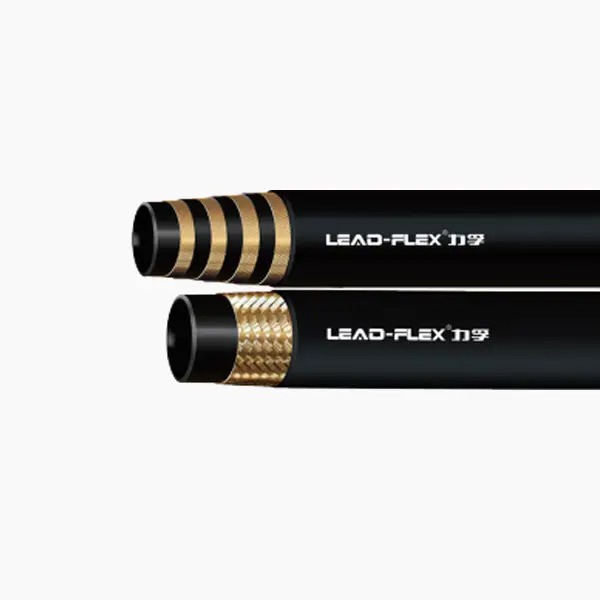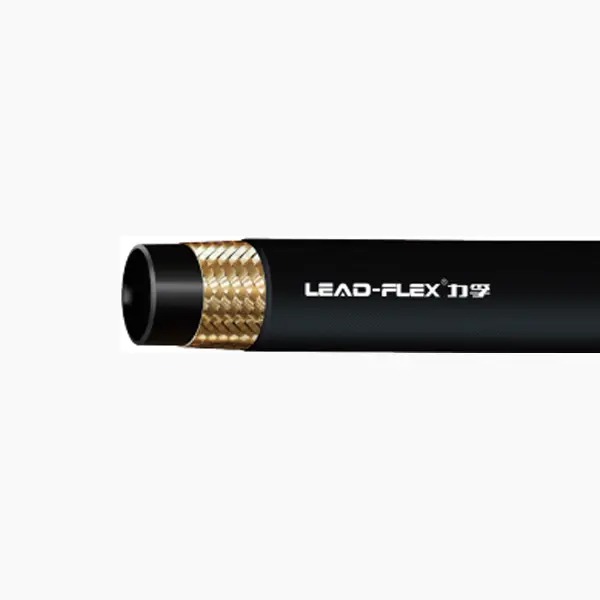Introduction
Steel wire braided hoses are indispensable components in various industrial and hydraulic systems. Designed to withstand high pressure and harsh environmental conditions, these hoses are constructed with a flexible rubber or thermoplastic inner tube, reinforced by a braided layer of high-tensile steel wire. This design allows them to transfer fluids like oil, water, and gas efficiently under pressure. However, like any other mechanical component, they are subject to wear and degradation over time. Prolonging their lifespan not only ensures system reliability but also reduces downtime and maintenance costs.
Understanding how to maintain and extend the life of a steel wire braided hose is crucial for engineers, maintenance personnel, and anyone working with hydraulic or pneumatic systems. This article provides in-depth strategies and maintenance practices to achieve optimal hose longevity without compromising safety or efficiency.
Understand the Operating Environment and Hose Specification
Every steel wire braided hose is designed for a specific application. Using the wrong hose for a particular environment significantly reduces its lifespan. Factors such as temperature, pressure, chemical exposure, and physical stress must be considered.
Know Your Pressure Ratings and Temperature Limits
Each hose comes with a pressure rating that should never be exceeded. Operating a hose beyond its rated pressure can cause premature failure through internal damage or sudden bursting. Likewise, temperatures outside the recommended range can degrade the hose material or reduce the effectiveness of the steel wire reinforcement.
Use the following guideline table as a reference:
| Hose Specification | Max Operating Pressure | Temperature Range |
| Standard Steel Braided Hose | Up to 4000 PSI | -40°C to 120°C |
| High-Temp Resistant Hose | Up to 3000 PSI | -40°C to 150°C |
Never assume that all hoses are equal. Review manufacturer specifications and match the hose to your system’s operating parameters.
Proper Hose Installation – Avoiding Twisting and Bending
Improper installation is one of the top causes of premature hose failure. Steel wire braided hoses, while flexible, should never be excessively bent, twisted, or compressed beyond their minimum bend radius. Doing so creates stress points that can result in internal kinking or fraying of the wire braid.
Best Practices for Hose Routing and Mounting
Avoid sharp bends: Always use elbows or adaptors when necessary to prevent tight radius bending.
Support long hose runs: Use clamps or guides to relieve strain.
Prevent hose twist: Make sure the hose is installed in a neutral position without torsion.
Allow movement: For dynamic applications, provide slack to accommodate motion.
Correct installation extends hose life and ensures safer operation. An initial investment in proper mounting saves significant costs over time.

Conduct Regular Inspections and Preventive Maintenance
Routine inspection is one of the most effective strategies for extending hose life. Over time, small issues like surface abrasion, leakage, or corrosion can escalate if not addressed early.
What to Look for During Inspection
External Wear: Look for cuts, cracks, or flattening on the hose cover.
Leakage or seepage: Even small leaks signal internal damage.
Exposed wire braid: Indicates the outer layer is compromised.
Hose stiffness: Could indicate thermal or chemical degradation.
Set a monthly or quarterly inspection schedule depending on system usage. Replace hoses that show signs of wear before failure occurs. Use tags or logs to record inspection dates and observations for ongoing evaluation.
Cleanliness is Key – Avoid Internal Contamination
Internal contamination is a hidden enemy that slowly degrades hose performance. Dirt, metal shavings, or chemical residues can corrode the inner lining, leading to leaks and eventual failure.
Proper Cleaning and Flushing Practices
Flush new hoses: Before installation, remove debris from the interior.
Use filtered fluids: Ensure all system fluids are properly filtered.
Cap ends when not in use: Prevent airborne contamination when hoses are disconnected.
Contamination control is especially critical in high-precision systems such as aerospace, pharmaceutical, or food-grade fluid lines. Keeping the inside of the hose clean ensures both performance and safety.
Store and Handle Hoses Properly When Not in Use
Storage conditions significantly affect the hose’s material integrity. Exposure to direct sunlight, ozone, excessive humidity, or mechanical stress during storage can degrade the outer layer and compromise the steel wire braiding.
Storage Best Practices
Keep hoses in a dry, dark place: UV rays and moisture accelerate aging.
Avoid stacking: Heavy pressure can deform the hose or damage the wire braid.
Use hose reels or racks: Keep hoses coiled in their natural curvature without sharp bends.
For long-term storage, seal hose ends with plastic caps and consider wrapping them in protective sheaths. Proper storage increases shelf life and ensures hoses are ready for safe reuse.

Frequently Asked Questions (FAQ)
How long does a steel wire braided hose typically last?
The typical lifespan ranges from 2 to 5 years depending on usage, environment, and maintenance. In optimal conditions with proper care, some hoses may last even longer.
Can a damaged hose be repaired or reused?
It’s not recommended. Once the wire braid or internal layer is compromised, the hose’s integrity is lost. Always replace rather than repair for safety.
What causes hose blistering or bubbling?
This usually results from thermal damage or chemical incompatibility. Check fluid temperature and compatibility with the inner tube material.
What’s the difference between single and double braided hoses?
Double braided hoses have two layers of steel wire, providing higher pressure resistance and durability. Choose based on system pressure and vibration level.
Conclusion
Extending the life of your steel wire braided hose requires a strategic approach—starting from correct specification and installation, to routine maintenance and proper storage. By adopting the right practices, users can significantly reduce replacement frequency, minimize downtime, and improve overall system reliability.
No shortcut replaces a disciplined maintenance schedule and informed operation. Keep the hose clean, handle it with care, and watch closely for early signs of wear. These actions pay dividends in the form of cost savings, safety assurance, and operational excellence.














